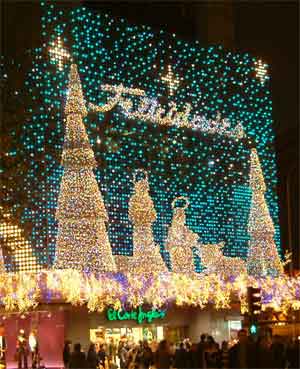
If Paris is an amazing city throughout the year, at Christmas it becomes a spectacular place. During this festive season the French capital gives honour to its name - the city of lights. Thousands of bulbs adorn the streets, granting the city a unique appearance. Everything is flooded with light and the city shines awaiting Santa's arrival.
Paris is the perfect city to spend the Christmas holidays. It looks like a fairy tale. Not only the lights decorate the city, but thousands of Christmas trees, nativity scenes and shop windows give it a magical touch. In addition, some big wheels and ice skating rinks are installed in order to give the children an unforgettable Christmas. The colourful Christmas lights adorn especially the three major Parisian department stores - Galeries Lafayette, Printemps and Bon Marche. Even Santa Claus stays in Paris a few days before Christmas Eve to enjoy its charm!
While the entire city is splendid at Christmas, it's worth visiting certain places at this time of the year. And what better way to start than by strolling among the Champs Elysees, one of the most beautiful avenues in the world, especially this festive season. The Notre-Dame cathedral is another key place to go at Christmas time. Every year a huge Christmas tree with red ornaments is installed in front of the main entrance. In addition, on Christmas Eve the celebration of Midnight Mass is held here. The Trocadero Gardens are the perfect spot to see the iconic Eiffel Tower. It illuminates every hour for five minutes with thousands of golden lights. It is an amazing spectacle! Parisian people celebrate a special dinner the day before Christmas. The menu consists of fresh oysters, foie gras, smoked salmon, goose, turkey or roast chicken; then, they eat one of their exquisite chocolates such as the Bûche de Noël with Champagne.
There are two famous Christmas Markets: Saint-Germain-des-Prés and Saint-Sulpice. Both offer beautiful Christmas crafts and decorative objects, in addition to regional culinary specialties from all over France.
Travel to Paris this Christmas! No corner of the city will leave you indifferent. To enjoy of the best accommodation, rent Paris Apartments.
Merry Christmas!







